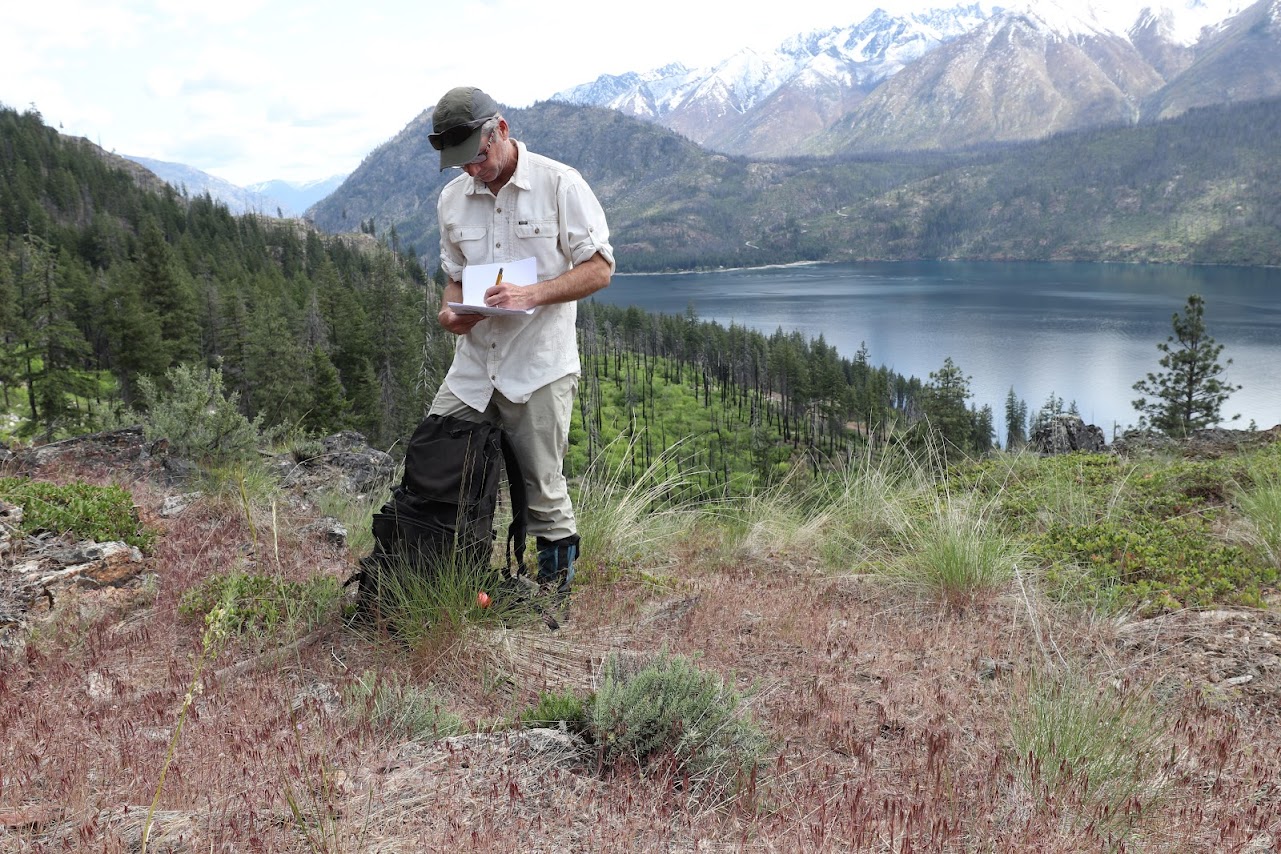
Josh Wozniak, an Environmental Scientist at Parametrix, was recently featured in Douglasia, Journal of the Washington Native Plant Society. He discussed the rare plants occupying an equally rare geological niche of Lake Chelan. Click here to read the full article (pages 10-12).
Josh volunteers with the University of Washington’s Rare Care Program. The program “builds partnerships with federal, state and local agencies to provide critical information needed in the conservation and recovery of our state’s native rare species. Citizen scientists and students participate in rare plant monitoring, ex situ conservation, reintroduction and education.” Josh got involved in 2018 after hearing about the program at a conference. He has completed surveys in the San Juans, North, Central, and South Cascades, the Olympic Mountains, and Joint Base Lewis-McChord. He also reviews program data, conducts population trend analysis, and collects seeds for restoration projects.
Recently, his volunteer work has been focused on the Lake Chelan area in Eastern Washington. Lake Chelan is a narrow, 50-mile long glacially carved trench that extends 450 feet below sea level. It connects a variety of wet, dry, and rocky landscapes and provides a freshwater resource to wildlife and creates unique climatic effects on the landscape.
The areas surrounding the lake also contain a number of rare plant species, including some that occur nowhere else in Washington. One of those species is Pellaea brachtyptera (Sierra cliffbrake). Its only known occurrence in Washington is along the north side of the lake in a handful of populations. Comprehensive surveys for this species were initiated by the Rare Care program in 2016.


Josh helped to map a number of new populations in 2018 and 2019. He returned solo in 2020 to survey some unexplored areas near Stehekin. Again, in May 2021 he returned with another volunteer to complete the surveys of the remaining populations located down lake. The survey extended 12 miles eastward and mapped several hundred populations, including newly discovered areas.

The volunteer team was left with many questions after this survey: Were these unique populations a relic left behind from long-lost landscapes, slowly fading under our watch? Was this species brought here with propagules attached to humans, livestock, or wildlife? How many climate changes have these populations weathered?
“I look forward to re-visiting these areas throughout my life to watch and learn from their patient teachings,” said Josh.


